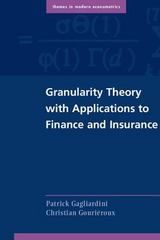Answered step by step
Verified Expert Solution
Question
1 Approved Answer
Question 1 (20 points) Consider an economy where individuals live for three periods: youth, middle age, and old age. The young are endowed with

Question 1 (20 points) Consider an economy where individuals live for three periods: youth, middle age, and old age. The young are endowed with y units of the consumption good, but the endowment is zero when middle-aged and old. Aside from consuming their endowment, they can sell it in exchange for fiat money. They also have the option to invest in capital, which produces output only after 10.25%. Each period, the two periods and then delivers a net real rate of return X 1 = number of young people born increases by a factor n = 1.02, and the money stock increases at a rate z = 1.2. (a) (5 points) Calculate the net rate of return to fiat money over one and two periods. (b) (5 points) Calculate the gross inflation rate over one and two periods. (c) (5 points) Suppose the banking sector consists of competitive banks that make zero profits from costless intermediation. Calculate the gross and net real rate of interest that these banks offer on one-period deposits. What is the corresponding net nominal interest rate? (d) (5 points) Determine whether individuals will choose fiat money or deposits with private banks to finance consumption in middle age. Explain.
Step by Step Solution
There are 3 Steps involved in it
Step: 1

Get Instant Access to Expert-Tailored Solutions
See step-by-step solutions with expert insights and AI powered tools for academic success
Step: 2

Step: 3

Ace Your Homework with AI
Get the answers you need in no time with our AI-driven, step-by-step assistance
Get Started


